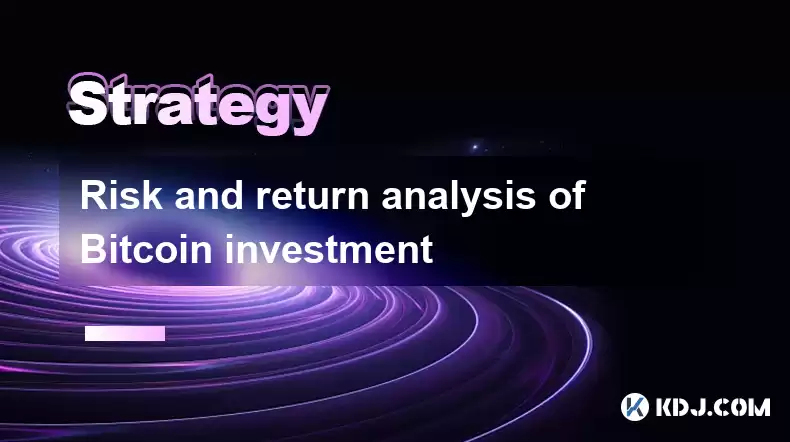-
 Bitcoin
Bitcoin $117300
1.93% -
 Ethereum
Ethereum $3866
5.21% -
 XRP
XRP $3.109
3.81% -
 Tether USDt
Tether USDt $1.000
0.01% -
 BNB
BNB $781.5
1.52% -
 Solana
Solana $173.0
2.95% -
 USDC
USDC $0.9998
0.00% -
 Dogecoin
Dogecoin $0.2181
6.31% -
 TRON
TRON $0.3403
0.93% -
 Cardano
Cardano $0.7683
3.91% -
 Hyperliquid
Hyperliquid $40.08
5.09% -
 Sui
Sui $3.742
7.38% -
 Stellar
Stellar $0.4152
4.69% -
 Chainlink
Chainlink $18.40
10.03% -
 Bitcoin Cash
Bitcoin Cash $580.6
2.21% -
 Hedera
Hedera $0.2543
4.25% -
 Ethena USDe
Ethena USDe $1.001
-0.01% -
 Avalanche
Avalanche $22.94
3.52% -
 Litecoin
Litecoin $121.8
2.24% -
 UNUS SED LEO
UNUS SED LEO $8.955
-0.41% -
 Toncoin
Toncoin $3.330
3.03% -
 Shiba Inu
Shiba Inu $0.00001270
2.97% -
 Uniswap
Uniswap $10.34
6.42% -
 Polkadot
Polkadot $3.805
3.86% -
 Dai
Dai $1.000
0.01% -
 Bitget Token
Bitget Token $4.429
1.80% -
 Cronos
Cronos $0.1495
4.65% -
 Monero
Monero $255.6
-9.08% -
 Pepe
Pepe $0.00001096
4.40% -
 Aave
Aave $282.9
7.85%
Risk and return analysis of Bitcoin investment
Bitcoin's high volatility offers potential for significant returns but also substantial risks, requiring careful analysis of market, regulatory, and security factors.
Apr 09, 2025 at 01:14 am

Investing in Bitcoin, like any other financial asset, involves a careful analysis of risk and return. Bitcoin, being the first and most well-known cryptocurrency, has attracted a wide range of investors from retail to institutional. Understanding the potential risks and returns associated with Bitcoin investment is crucial for making informed decisions. This article delves into the various aspects of risk and return in Bitcoin investment, providing a comprehensive analysis to help investors navigate this volatile yet potentially rewarding market.
Volatility and Market Risk
Bitcoin's volatility is one of its most defining characteristics. The cryptocurrency market, and Bitcoin in particular, is known for its rapid price fluctuations. This volatility can lead to significant gains but also substantial losses. The market risk associated with Bitcoin is high due to its sensitivity to various factors such as regulatory news, technological developments, and macroeconomic trends.
For instance, a sudden announcement of regulatory crackdowns in major economies can lead to a sharp decline in Bitcoin's price. Conversely, positive news such as institutional adoption or technological advancements can drive the price up. Investors need to be aware of these factors and understand that the potential for high returns comes with the risk of equally high losses.
Historical Returns and Performance
Looking at Bitcoin's historical performance provides insight into its potential returns. Since its inception in 2009, Bitcoin has experienced several bull and bear cycles. For example, in 2017, Bitcoin's price surged from around $1,000 to nearly $20,000, only to fall back to around $3,000 in 2018. More recently, in 2020 and 2021, Bitcoin saw another significant rally, reaching an all-time high of over $60,000.
These cycles demonstrate Bitcoin's potential for high returns. However, they also highlight the risk of significant drawdowns. Investors who entered the market at the peak of 2017 and held through 2018 would have experienced a substantial loss. Therefore, understanding the timing of entry and exit points is crucial for managing risk and maximizing returns.
Liquidity and Market Depth
Liquidity is another critical factor in assessing the risk and return of Bitcoin investment. Bitcoin is one of the most liquid cryptocurrencies, with a high trading volume across various exchanges. This liquidity allows investors to enter and exit positions relatively easily, which can be beneficial in managing risk.
However, liquidity can also be a double-edged sword. During times of high volatility, liquidity can dry up, leading to slippage and difficulty in executing trades at desired prices. This can exacerbate losses during market downturns. Therefore, investors should consider the liquidity of the exchanges they use and the potential impact on their investment strategy.
Regulatory and Legal Risks
Regulatory risks are a significant concern for Bitcoin investors. The regulatory environment for cryptocurrencies varies widely across different jurisdictions. Some countries have embraced Bitcoin and other cryptocurrencies, while others have imposed strict regulations or outright bans.
Changes in regulatory policies can have a profound impact on Bitcoin's price and market dynamics. For example, a ban on cryptocurrency trading in a major market like China can lead to a sharp decline in Bitcoin's price. Conversely, positive regulatory developments, such as the approval of Bitcoin exchange-traded funds (ETFs), can drive the price up.
Investors need to stay informed about regulatory developments in key markets and understand how these changes can affect their investment. Diversifying across different jurisdictions can help mitigate some of the regulatory risks associated with Bitcoin investment.
Technological and Security Risks
Technological risks are inherent in Bitcoin investment due to its reliance on blockchain technology. While the Bitcoin network has proven to be robust, it is not immune to potential vulnerabilities. Issues such as 51% attacks, where a group of miners control more than half of the network's mining power, can compromise the security of the network.
Additionally, security risks associated with storing and transacting Bitcoin are significant. Investors need to secure their private keys and use reputable wallets and exchanges to minimize the risk of theft or loss. Incidents of hacking and fraud have occurred in the cryptocurrency space, leading to significant financial losses for investors.
Understanding these technological and security risks is essential for managing the overall risk of Bitcoin investment. Implementing best practices for security, such as using hardware wallets and enabling two-factor authentication, can help mitigate these risks.
Diversification and Risk Management
Diversification is a key strategy for managing risk in Bitcoin investment. While Bitcoin has the potential for high returns, it is also highly volatile. Diversifying across different cryptocurrencies, asset classes, and investment strategies can help reduce the overall risk of a portfolio.
For example, an investor might allocate a portion of their portfolio to Bitcoin, another portion to other cryptocurrencies, and the rest to traditional assets like stocks and bonds. This diversification can help cushion the impact of Bitcoin's volatility on the overall portfolio.
Additionally, risk management strategies such as setting stop-loss orders and regularly rebalancing the portfolio can help investors manage their exposure to Bitcoin. These strategies can help limit potential losses and ensure that the investment aligns with the investor's risk tolerance and financial goals.
Frequently Asked Questions
Q: How can I assess the risk of investing in Bitcoin?
A: Assessing the risk of investing in Bitcoin involves understanding its volatility, historical performance, liquidity, regulatory environment, and technological and security risks. Investors should also consider their risk tolerance and financial goals when evaluating the suitability of Bitcoin as an investment.
Q: What are some strategies for managing risk in Bitcoin investment?
A: Strategies for managing risk in Bitcoin investment include diversification across different assets, setting stop-loss orders, regularly rebalancing the portfolio, and staying informed about regulatory and market developments. Implementing best practices for security, such as using hardware wallets, can also help mitigate risks.
Q: How does Bitcoin's volatility affect its potential returns?
A: Bitcoin's high volatility can lead to significant potential returns, as seen in its historical performance. However, this volatility also increases the risk of substantial losses. Investors need to carefully consider their entry and exit points and use risk management strategies to navigate Bitcoin's price fluctuations.
Q: What role does liquidity play in Bitcoin investment?
A: Liquidity plays a crucial role in Bitcoin investment by allowing investors to enter and exit positions relatively easily. High liquidity can be beneficial for managing risk, but it can also lead to slippage during times of high volatility. Investors should consider the liquidity of the exchanges they use and its potential impact on their investment strategy.
Disclaimer:info@kdj.com
The information provided is not trading advice. kdj.com does not assume any responsibility for any investments made based on the information provided in this article. Cryptocurrencies are highly volatile and it is highly recommended that you invest with caution after thorough research!
If you believe that the content used on this website infringes your copyright, please contact us immediately (info@kdj.com) and we will delete it promptly.
- Bitcoin Reserve, Gold Revaluation, Congress Considers: A New Era for US Financial Strategy?
- 2025-08-08 04:30:12
- KAITO's Momentum: Can It Reclaim Support Amidst Social Media Scrutiny?
- 2025-08-08 04:30:12
- Pi Coin's dApp and AI Potential: Building a Decentralized Future
- 2025-08-08 02:30:12
- Ruvi AI Takes the Lead: Outshining Dogecoin on CoinMarketCap
- 2025-08-08 02:50:12
- Cryptos Under $1: Is Ripple Still the King?
- 2025-08-08 03:50:12
- Cold Wallet, Bonk Price, ICP Price: Navigating the Crypto Landscape in 2025
- 2025-08-08 03:56:12
Related knowledge

How to avoid common crypto investment mistakes?
Jul 13,2025 at 01:35am
Understanding the Risks of Crypto InvestmentInvesting in cryptocurrency can be highly rewarding, but it also comes with significant risks. One of the ...

What is a long-short crypto strategy?
Jul 15,2025 at 10:56am
Understanding the Basics of a Long-Short Crypto StrategyA long-short crypto strategy is an investment approach where traders simultaneously take long ...

What is a long-short crypto strategy?
Jul 11,2025 at 01:28pm
Understanding the Basics of Long-Short Crypto StrategyA long-short crypto strategy is an investment approach where traders take both long and short po...

How to use the RSI indicator for crypto?
Jul 12,2025 at 03:56pm
Understanding the RSI Indicator in Cryptocurrency TradingThe Relative Strength Index (RSI) is a momentum oscillator used to measure the speed and chan...

Is copy trading a good strategy for crypto beginners?
Jul 12,2025 at 08:28am
Understanding Copy Trading in the Cryptocurrency MarketCopy trading is a strategy where novice traders replicate the trades of experienced investors a...

How to build a crypto portfolio with $1000?
Jul 13,2025 at 08:14pm
Understanding the Basics of Cryptocurrency InvestmentBuilding a crypto portfolio with $1000 starts with understanding the fundamentals of cryptocurren...

How to avoid common crypto investment mistakes?
Jul 13,2025 at 01:35am
Understanding the Risks of Crypto InvestmentInvesting in cryptocurrency can be highly rewarding, but it also comes with significant risks. One of the ...

What is a long-short crypto strategy?
Jul 15,2025 at 10:56am
Understanding the Basics of a Long-Short Crypto StrategyA long-short crypto strategy is an investment approach where traders simultaneously take long ...

What is a long-short crypto strategy?
Jul 11,2025 at 01:28pm
Understanding the Basics of Long-Short Crypto StrategyA long-short crypto strategy is an investment approach where traders take both long and short po...

How to use the RSI indicator for crypto?
Jul 12,2025 at 03:56pm
Understanding the RSI Indicator in Cryptocurrency TradingThe Relative Strength Index (RSI) is a momentum oscillator used to measure the speed and chan...

Is copy trading a good strategy for crypto beginners?
Jul 12,2025 at 08:28am
Understanding Copy Trading in the Cryptocurrency MarketCopy trading is a strategy where novice traders replicate the trades of experienced investors a...

How to build a crypto portfolio with $1000?
Jul 13,2025 at 08:14pm
Understanding the Basics of Cryptocurrency InvestmentBuilding a crypto portfolio with $1000 starts with understanding the fundamentals of cryptocurren...
See all articles

























































































